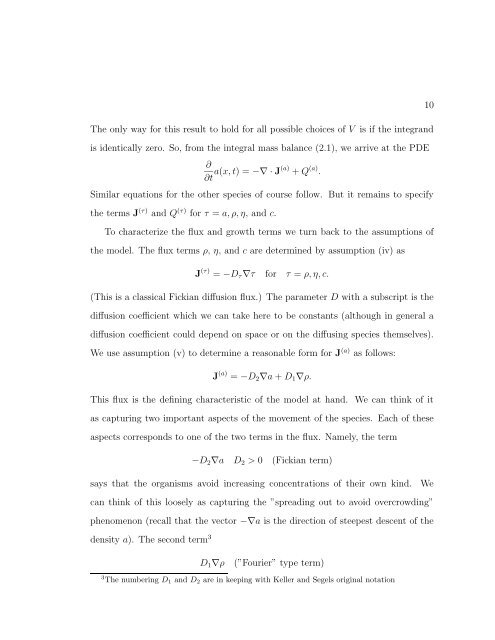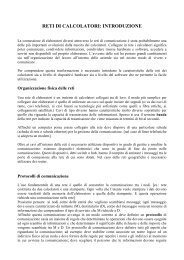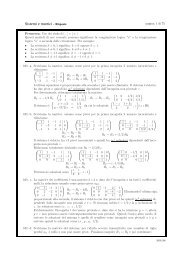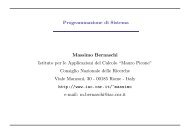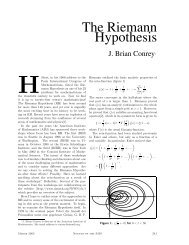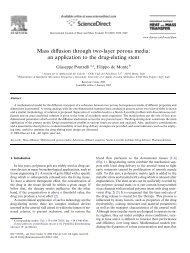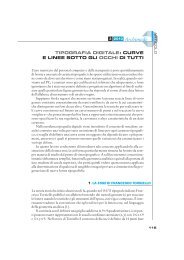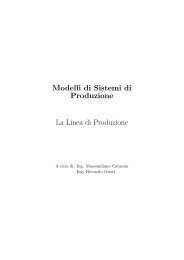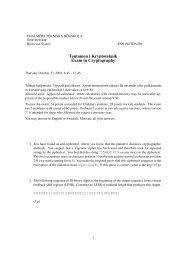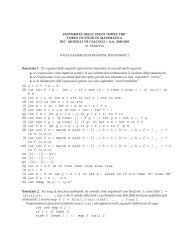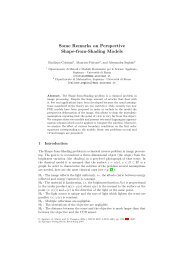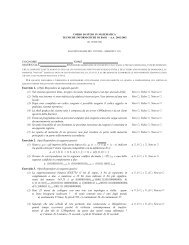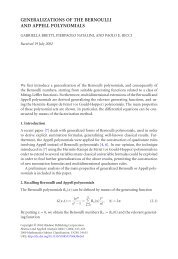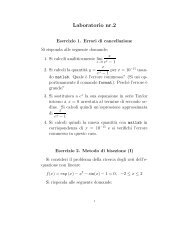A SHORT COURSE IN THE MODELING OF CHEMOTAXIS
A SHORT COURSE IN THE MODELING OF CHEMOTAXIS
A SHORT COURSE IN THE MODELING OF CHEMOTAXIS
You also want an ePaper? Increase the reach of your titles
YUMPU automatically turns print PDFs into web optimized ePapers that Google loves.
The only way for this result to hold for all possible choices of V is if the integrand<br />
is identically zero. So, from the integral mass balance (2.1), we arrive at the PDE<br />
∂<br />
∂t a(x, t) = −∇ · J(a) + Q (a) .<br />
Similar equations for the other species of course follow. But it remains to specify<br />
the terms J (τ) and Q (τ) for τ = a, ρ, η, and c.<br />
To characterize the flux and growth terms we turn back to the assumptions of<br />
the model. The flux terms ρ, η, and c are determined by assumption (iv) as<br />
J (τ) = −Dτ∇τ for τ = ρ, η, c.<br />
(This is a classical Fickian diffusion flux.) The parameter D with a subscript is the<br />
diffusion coefficient which we can take here to be constants (although in general a<br />
diffusion coefficient could depend on space or on the diffusing species themselves).<br />
We use assumption (v) to determine a reasonable form for J (a) as follows:<br />
J (a) = −D2∇a + D1∇ρ.<br />
This flux is the defining characteristic of the model at hand. We can think of it<br />
as capturing two important aspects of the movement of the species. Each of these<br />
aspects corresponds to one of the two terms in the flux. Namely, the term<br />
−D2∇a D2 > 0 (Fickian term)<br />
says that the organisms avoid increasing concentrations of their own kind. We<br />
can think of this loosely as capturing the ”spreading out to avoid overcrowding”<br />
phenomenon (recall that the vector −∇a is the direction of steepest descent of the<br />
density a). The second term 3<br />
D1∇ρ (”Fourier” type term)<br />
3 The numbering D1 and D2 are in keeping with Keller and Segels original notation<br />
10


